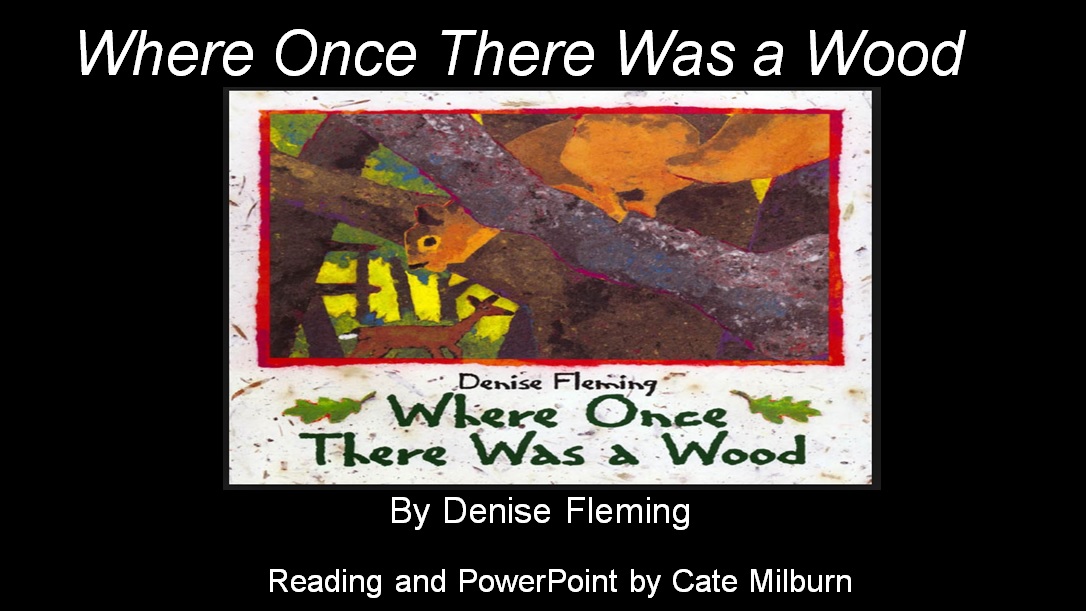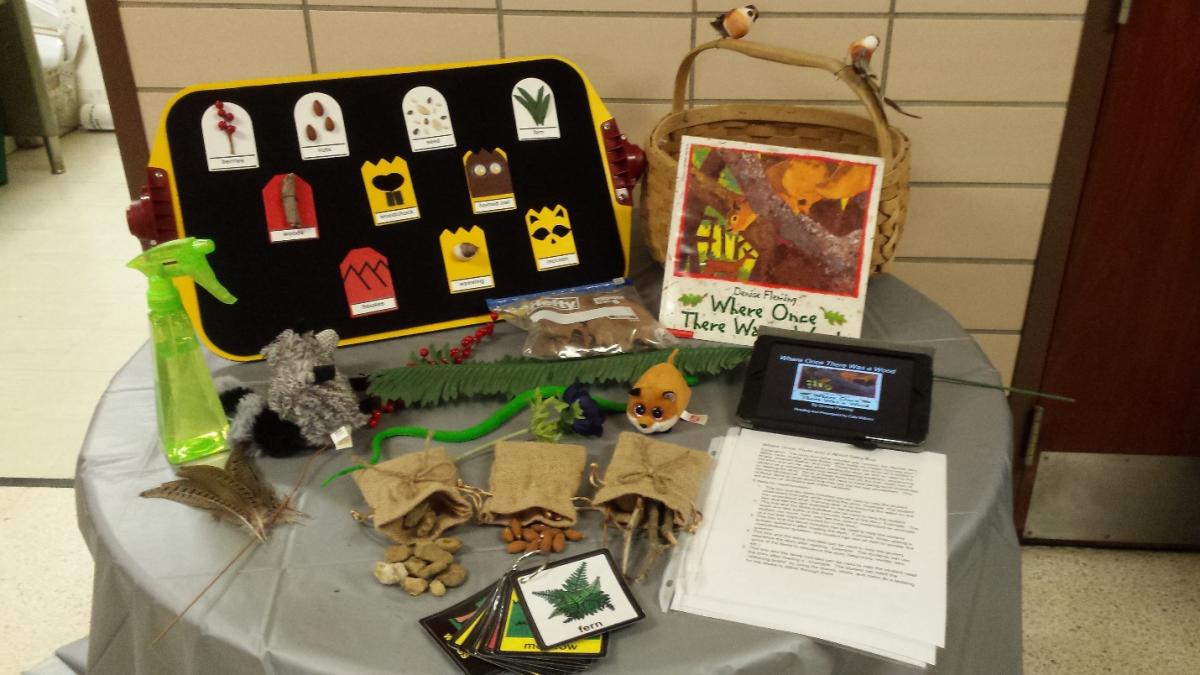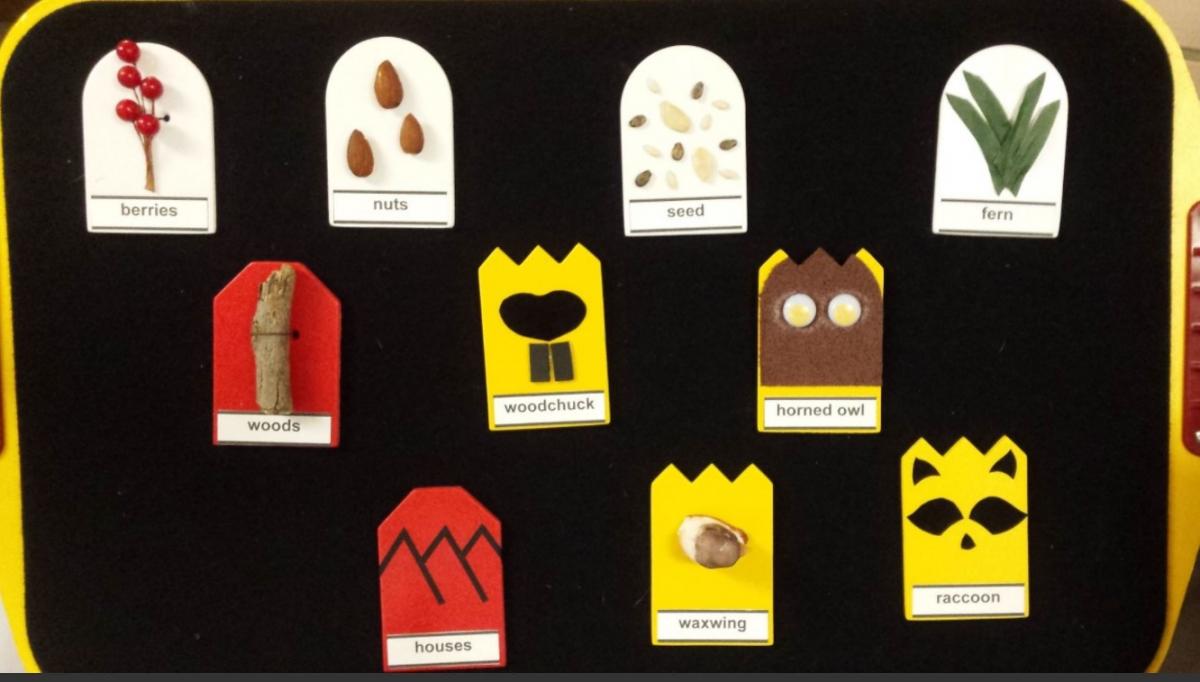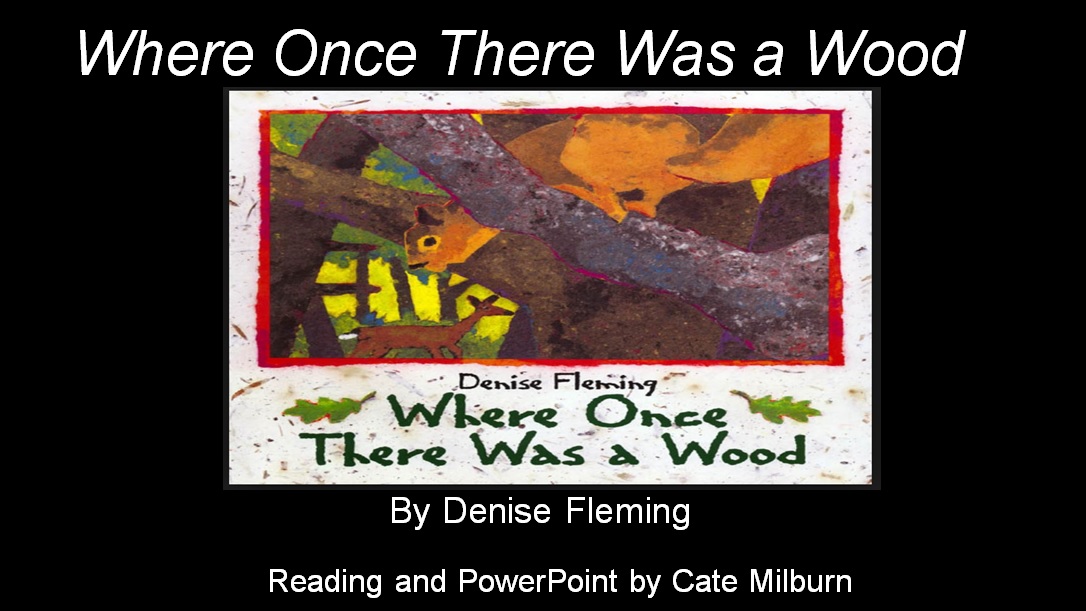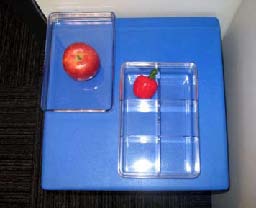As part of the graduate coursework for Visual Impairments and Multiple Disabilities in the Teacher Preparation Program in Visual Impairments at the University of Kentucky, students were asked to complete four projects: Story Box, Tactile Communication Symbols, Picture Communication Symbols for Story Box, and Talking Book Project.
We are sharing them on Paths to Literacy and hope that others will use them! Please add your comments at the bottom of the page.
Introduction
Title: Where Once There was a Wood
Author: Denise Fleming
Why I chose this book: I chose this book because this book can be used for many different ages and with all students. This is a great book to discuss the woods habitat and what animals, plants, and needs a woods habitat has. This book would be a great introduction to what a student might find in the woods, but it is important to actually take the students into a woods habitat to hear the real sounds and possibly touch and feel these items. This book is also a good introduction to teaching the importance of preservation of habitats. I would recommend this book for students with visual impairments and multiple disabilities.
Story Box
Explanation: The Story Box items included are: raccoon, fox, berries, fern, sticks, rocks, leaves, purple flower, spray bottle (to imitate “morning dew”), snake, pheasant feather, and nuts. These items are items all included in the story and can be used when reading the story as well as used by the student as a communication tool when answering questions, sequencing, or retelling the story. Some of these items are not the true, exact size of the real item/animal.
The student will need to have background knowledge of these items to understand that they are not the real animal/item. This will ensure no confusion with these concepts.
5 Ideas for Implementation:
- This box and the items included can be used to help the student understand concepts while reading the story. Example: The student can understand what “morning dew” is by spraying the water on the fern and feel the light mist/dew on the leaves.
- This box and the items included can be used to help the student touch and feel some of the concrete items in the story. Example: The student can touch, hold, and feel the nuts to understand an example of a nut that might be hunted for in the story.
- This box and the items included can be used to help the student answer questions after reading the story. Example: When asking a comprehension question, the student can use an item to answer the question.
- This box and the items included can be used to help the student sequence the story after reading. Example: The students can use some of the items to sequence the story (beginning, middle, end, etc.).
- This box and the items included can be used to help the student retell the story after reading it. Example: The student can retell the “slithering snake” by using the leaves, sticks, and rocks as a bedding for the snake to slither through them.
Tactile Communication Symbols
Explanation: The Tactile Communication Symbols I chose are: woods, houses, owl, raccoon, waxwing, woodchuck, berries, fern, nuts, and seed. I chose these symbols because the encompassed many of the needs of a habitat in the woods. In a habitat, animals need space, shelter, water, and food. These symbols all fall into at least one of these categories and needs of a habitat, appreciating the natural world, habitat loss, and wildlife protection. Also, the use of the symbols while reading and comprehending the short story Where Once There was a Wood by Denise Fleming will be extremely useful for all student with or without visual impairments to work on listening and comprehension skills.
Prior to the use of these symbols, the student needs to have background knowledge of these items and that they are not the true size but a symbol to represent each item.
Questions for Tactile Communication Symbols
- Find the symbols that fill in the blanks. Where once there was a wood, a ______________, and a ________________.
- What did the waxwing eat once they were ripened?
- The pheasant ate __________ and ____________. Choose the 2 symbols that fill in the blanks.
- Choose 2 animals that were your favorite in the story and tell me why.
- The purple violets grew close to what other plant?
- Which symbol will hurt the woods habitat and why?
- Which animal rummaged in the night for his food?
- Which animal has to fly to get his food for his hungry brood?
- What does the “woods” symbol feel like? Describe the texture of the tactile symbol.
- Which animal uses his large front teeth to chew through hard items like wood?
- If the habitat was taken away or lost, what would you miss the most? Choose as many tactile symbols as you want.
Picture Communication Symbols
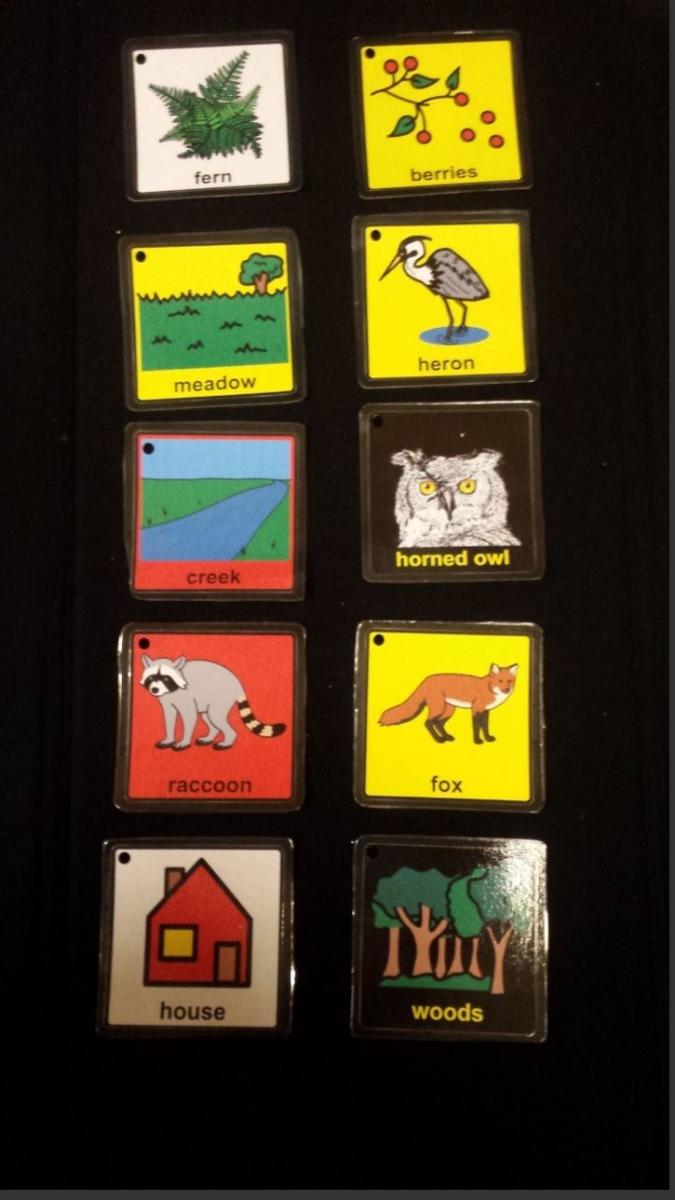 Explanation: The Picture Communication Symbols I chose are: woods, creek, meadow, heron, horned owl, raccoon, red fox, berries, fern, and house. I chose these symbols because the encompassed many of the needs of a habitat in the woods. In a habitat, animals need space, shelter, water, and food. These symbols all fall into at least one of these categories and needs of a habitat. Also, the use of the symbols while reading and comprehending the short story Where Once There was a Wood by Denise Fleming will be extremely useful for all student with or without visual impairments.
Explanation: The Picture Communication Symbols I chose are: woods, creek, meadow, heron, horned owl, raccoon, red fox, berries, fern, and house. I chose these symbols because the encompassed many of the needs of a habitat in the woods. In a habitat, animals need space, shelter, water, and food. These symbols all fall into at least one of these categories and needs of a habitat. Also, the use of the symbols while reading and comprehending the short story Where Once There was a Wood by Denise Fleming will be extremely useful for all student with or without visual impairments.
Prior to the use of these symbols, the student needs to have background knowledge of these items and that they are not the true size but a picture symbol to represent each item.
Questions for Picture Communication Symbols
- Where is the setting of the story?
- In a habitat, animals need space, shelter, water, and food. Where could the animals get water?
- In a habitat, animals need space, shelter, water, and food. Where could the animals find shelter?
- In a habitat, animals need space, shelter, water, and food. What food did the waxwings find to eat?
- Which animal speared his food?
- What symbol shows the shelter humans would have?
- What animal rested his eyes to sleep?
- Which animal flies and hunted for his food for his hungry brood?
- Which animal rummaged in the night?
- What do you think will happen to the woods when they continue to build more houses?
- Which animal in the woods habitat is your favorite!?
Talking Book Project
Some students may prefer to use a talking PowerPoint book to read along with the book, while listening to the audio version.
This talking book is based on Where There Once Was a Wood by Denise Fleming.

